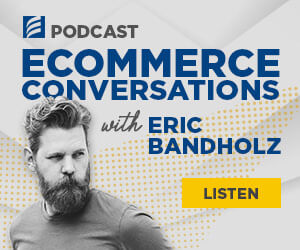Email is a communications panacea, connecting businesses to customers and prospects for transactions, offers, and content, provided the messages reach the inbox.
Gmail, Yahoo Mail, and other webmail companies don’t simply deliver every message to the recipient’s inbox. They instead sort, rate, and even block messages based on multiple signals.
The goal of those services is to provide a quality inbox experience for their customers.
Honor Unsubscribes
Unfortunately, even well-meaning businesses can send the wrong email signal.
For example, since leading webmail firms began requiring one-click unsubscribe functionality for large marketing and subscription email lists, some businesses have not properly honored those unsubscribe requests, even when they remove the subscriber in question.
The scenario can work like this.
- An online shop has two email lists: marketing and editorial (newsletter).
- Subscribers can opt in to one or both lists.
- The sending email address, e.g., hi@somestore.com, is the same for both lists.
- A recipient unsubscribes from the marketing list.
- The store removes the contact from the marketing list immediately, but continues to send the newsletter, since the store considers it separate.
- Gmail and Yahoo Mail receive messages from the same sending address, and believe the business has not honored the unsubscribe request.
This subtle failure to “honor” unsubscribes can lead to relatively lower IP and domain sending reputations that, in turn, direct the business’s messages to the promotions tab or worse, the spam tab.
Here’s how to manage one-click unsubscribes for multiple lists from a single domain.
Recommended

Email Delivery, Explained
February 26, 2024
Sending Address
The simplest remedy is changing the email sending “from” address.
For example, an online boutique could send marketing emails from offers@example-boutique.com, and content (editorial) from newsletter@example-boutique.com.
Segregating the sending addresses will help the webmail company distinguish the shop’s various opt-in lists.
The requirement of one-click unsubscribes and unsubscribe headers doesn’t apply to transactional messages, but using a distinct sending address such as orders@example-boutique.com ensures a merchant doesn’t lose access to receipts or shipping notices due to missed marketing unsubscribes.
Unsubscribe Headers
An email “header” precedes the message body and includes info about the sender and recipient. It tracks the delivery path and provides authentication results from SPF, DKIM, and DMARC checks. It may also include additional content, such as how to unsubscribe.
Every bulk email sent, whether the message is marketing or editorial, should include unsubscribe headers like the following:
- List-Unsubscribe: <https://example-store.com/unsubscribe?list=marketing&email=user@example.com or a unique id>
- List-Unsubscribe-Post: List-Unsubscribe=One-Click
The “List-Unsubscribe” header instructs the webmail provider where to send the unsubscribe request and identifies the subscriber with either an email address or a unique identifier.
The list parameter — e.g., “list=marketing” — is optional, but will help the provider distinguish between a marketing and newsletter list. Thus if it receives an email message with the list parameter set to “newsletter,” Gmail will recognize it as distinct from the “marketing” list.
Finally, “List-Unsubscribe-Post” enables the one-click unsubscribe feature found at the top of some email messages.
List-ID for Clarity
To communicate even more clearly to webmail providers, businesses can employ the “List-ID” header.
This optional field assigns a persistent identifier that associates the message sent with a specific list.
The header takes the form:
List-ID: "Weekly Newsletter" <newsletter.list-id.store.com>
The List-ID can clarify the purpose of each message if, say, two email broadcasts share an address or are otherwise difficult to distinguish. Senders managing multiple lists can rely on the added List-ID transparency for improved compliance and visibility.
Most email marketing platforms — e.g., Klaviyo, Mailchimp — allow custom List-ID headers, but many do not. Hence merchants wanting to try this tactic are dependent on their platform’s capabilities.
Postmaster Tools
Once the one-click unsubscribe feature and various sending addresses are in place, email senders should monitor Gmail’s Postmaster Tools, checking the compliance status indicator labeled “Honor Unsubscribe.”
Gmail will change the status to “Needs Work” if it detects subscribers are receiving mail after opting out, indicating a problem with how the business manages the messages.

This compliance report in Postmaster Tools pertains to a business that maintained multiple lists but did not communicate them to Gmail. The result was a ding to the company’s sending reputation.
Precision Pays
Merchants with multiple lists who treat unsubscribes seriously will likely maintain deliverability and preserve customer trust.
The key is ensuring that webmail providers understand the business has multiple lists and properly handles unsubscribe requests.




